Collected here are a few details about some of those who play or played without nails. If you have any more names I could feature, do please let me know – robmackillop at gmail dot com. I won’t include everyone, of course, but hopefully a good cross-section of approaches to playing the classical guitar without nails, from Romantic period to the avant-garde.
Julián Arcas (1832 – 1882)
I was not aware Arcas was a flesh player until my good friend, Kacper Wierchoś, handed me the following information from a good source. Translation by Kacper, with thanks.
(…) Julián Arcas debe considerarse un digno sostenedor del arte e instrumento de los Sors y Aguados, por la pureza y dulzura que hace brotar de las cuerdas de la guitarra, que puntea con las yemas de los dedos, que es lo menos común en los guitarristas contemporáneos; por la vibración y expresión que da a las notas que pueden competir con la de la voz humana; por su ejecución limpia y agilidad de ambas manos, la igualdad de los sonidos de suyo claros y sonoros y por su correcta y esmerada escuela. [Fargas y Soler, Antonio (1866). Biografías de los músicos más distinguidos de todos los países. Barcelona: La España Musical, no 33 y 34.]
(…) Julián Arcas has to be considered as a worthy representant of the art of Sor and Aguado, for the purity and sweetenes that springs from the strings of the guitar, that he plucks with the flesh of his fingers, which is the less common practice among the contemporary guitarrists; for the vibration and expresion he gives to the notes that can compete with the human voice; for his clear execution and skillful hands, the homogenity of the sounds, clear and sonorous and for his correct and careful school. [Fargas y Soler, Antonio (1866). Biographies of the most distinguished musicians from all the countries. Barcelona: The musical Spain, no 33 and 34.]
==========================
Francisco Tárrega (1852 – 1909)
– Hard evidence is difficult to ascertain, but Tárrega seems to have composed many pieces before he cut his nails off, including Recuerdos de la Alhambra. The Wikipedia entry says he cut them off in 1902. He did, however, go on to play successful concerts in Rome, Naples and Milan. We can only assume he preferred the sound he was now making, even when playing his earlier compositions, especially as so many of his students continued to play without nails throughout their careers.
Domingo Prat and Isaias Savio claim that Tárrega lost his nails due to hardening of the arteries. It might well be the case that there was a medical reason for Tárrega to adopt a no-nail technique, but it seems to have been a joyful discovery, which he then passed on to his students.
There is a wax cylinder recording thought to be of Tárrega performing his composition, Maria-Gavota. Two possible dates are given for the recording: 1899 or 1908. If the former, Tárrega is likely have been playing with nails, if the latter, no nails. Unfortunately the recording quality is very poor, and not everyone is convinced it is Tárrega playing. You can find the recording on the highly-recommended CD: Andres Segovia and his Contemporaries, Vol. 12 (DOREMI), which also includes performances by Pujol, Fortea, Robledo and others.
Please visit my dedicated Tárrega page HERE.
==========================
Emilio Pujol (1886 – 1980)
A famous group portrait: Segovia, Llobet, Pujol (bottom right) and Daniel Fortea. The flesh players get the seats 😉
Emilio Pujol was arguably the main proponent of flesh-only technique in the 20th century. His four-volume Escuela Razonada, “Based on the Principles of Francisco Tárrega” has been very influential. More on Pujol HERE, including his essay on flesh versus nails, and a review of his Escuela Razonada.
Pavana No.5 by Luys de Milan, 1936: EDIT: Too bad they have now become “Private”. I’ll leave them here in case they are shared with us again.
…with Matilde Cuervas, 1932 – Danza “La Vida Breve” by Falla:
==========================
Josefina Robledo (1892 – 1972)
– a pupil of Tárrega, no less. Very Romantic playing.
“Another important figure is the Spanish guitarist Josefina Robledo (1892-1972). A former student of Francisco Tárrega (1852-1909), Robledo came to São Paulo to escape the war in Europe. She performed in São Paulo in the same period as Barrios and Canhoto. “Her refined style created a sensation in the city, not only because of the high level of her performance skills but also due to the fact that she was a female virtuoso, something rarely seen at that time.
“The year 1916 thus marked the beginning of a sequence of great events that contributed to the better recognition of the guitar in the elite paulistana (São Paulo’s wealthy elite). Josefina Robledo, Agustin Barrios, and Americo Jacomino are considered the most important artists who contributed to the recognition of the guitar in Brazil.” [Quoted from “An Annotated Bibliography of Works by the Brazilian Composer Sérgio Assad” by João Paulo Figueirôa da Cruz, Florida State University]
These recordings were done by her husband on a home tape recorder, in the late 1950s, somewhat past her peak period, but they still reveal an incredibly sustained focus on the long, arching melodies of pieces by Tárrega, her teacher, and with whom she must have studied these pieces. It is interesting to speculate how much of her teacher’s interpretation is in these works.
Josefina’s transcription of Danzas Espanolos No.7 by Granados.
Spanish language appraisal HERE.
There is now a guitar festival in her honour HERE.
==========================
Pepita Roca (1897 – 1956)

The above image was taken from THIS SITE – a wonderful website in Spanish, which includes a biography of Pepita.
Many thanks to my cyber sleuth, Tate Harmann, for tracking down Pepita Roca. She studied a short time with Tárrega, until his death, and learned from him to play without nails.
La valenciana Pepita Roca si bien no tuvo la oportunidad de estudiar mucho tiempo con Tárrega (muerte prematura del maestro), sí supo captar todas las enseñanzas y transmitirlas a su vez a sus alumnos, entre las que estaba la técnica de tocar “sin uña”.
“Valencian Pepita Roca, despite not having studied for a long time with Tárrega (due to the master’s premature death), was able to absorb all of his teachings and pass them on to her students, among these (teachings) was the technique of playing without fingernails.”
Here’s piece of a letter that Pepita wrote to Rosa Gil:
“Ten presente además, que yo a pesar de mi estado de salud, continúo cortándome las uñas. Creo pues no te dejarás seducir por los enemigos del más dulce de los sonidos de la guitarra”
We have been unable to find any recordings by Pepita Roca. If you know of one, please let us know.
Emilio Pujol wrote a Homage to Pepita Roca, called Becqueriana – the title referring to Gustavo Adolpho Becquer, the late 19th-century post-Romanticist writer, who was to prove influential to early 20th-century Spanish writers, artists and musicians.
It is tempting also to connect the polka by Tárrega, called Pepita, to our heroine…further investigation is required.
==========================
Salvador Garcia (1861 – 1964)
Despite giving many concerts in Spain, France, China, India, Egypt and Turkey, due to psychological concerns, Salvador Garcia eventually concentrated on teaching as a career, and became a leading teacher of the Tárrega school. It is thought that Segovia received his knowledge of the Tárrega school through him, when Segovia lived at Garcia’s guest home at various times during the period 1915 – 1920.
Narciso Yepes numbers Garcia among Tárrega’s students who played without nails – see comments for Estanislao Marco below. He is said to have studied composition with Oscar Espla, though I am unable to verify this, there being no English biography of the man. His nickname was Pancha Verda.
==========================
Estanislao Marco (1873 – 1954)
– the name will become more familiar to guitarists over the coming years, after the discovery of most of his compositions in a tattered suitcase in a Valencia flea market. The discovery was made by Jorge Orozco, who has compiled four books of works by Marco, published by the Valencian publisher, Piles.
Marco’s most famous pupil was Narciso Yepes, who relates that:
“Estanislao Marco was one of Tárrega’s favourite students. I had the good fortune of studying with him. The Tárrega school had two branches, those who played with the fingertips and those who let their fingernails grow. The first group included: Estanislao Marco, Josefina Robledo, Salvador Garcia and Emilio Pujol.”
Many of his best compositions were written in the 1930s, and are somewhat backward looking to the age of Albéniz and Tárrega, and can sound instantly familiar – which is no bad thing.
Here I play his Desengaño (disenchantment), played, of course, without nails:
==========================
Juan Mercadal (1925 – 1996)
“Segovia has his style and I have mine.”
– an under-appreciated guitarist today, Mercadal was born in Cuba where he became the leading player. Later he toured abroad, eventually settling in Miami, where he later died. His playing is exquisite – emotional and tasteful. It is frustrating that his surviving recordings are not of the best audio quality. Listen to his beautifully poetic interpretation of La Maja De Goya, by Granados:
Here is a collection of videos, showing without question that he was one of the finest guitarists of the 20th century:
There is an interesting article HERE from one of his students, which also includes an obituary.
==========================
Renata Tarrago (1927 – 2005)
– The first female performer of Rodrigo’s Concierto de Aranjuez. Like Pujol, she also gave recitals with a vihuela. She hailed from Barcelona.
Twenty three minutes of Renata’s recordings:
==========================
Vahdah Olcott-Bickford
Sadly there are no recordings of this giant of the American classical guitar. Founder of The American Guitar Society, which eventually became the Los Angeles Guitar Society (1923). The following bold statement comes from her 94th year:
“My husband said, “Tell them the truth, that in all your life, you have never clawed at a guitar with your talons!” All of my concert playing in the largest concert halls such as New York’s Town Hall, was done with my fingers, never with nails. At my great sold-out concert in Town Hall, Mr. Frederick Martin (now head of the Martin Company) was in the audience (though I didn’t know it, nor him, though I knew his father). He had recently graduated from Yale. He sent a note to my dressing room, saying that he had never before heard such a wonderfully toned Martin Guitar, and asked whether he might examine it, which he did with great pleasure. This was one of the countless experiences that have proven to me, though my half-century career, that nails do not make it louder, only tinnier, and more metallic sounding. Magnum est veritas et prevailabit: “The purer the tone, the better it carries.” Nail-players should not criticize plectrum players, since they themselves are playing with plectra grown on the fingers! How about the queenly Italian harp? Clawing with nails would not get far in that realm! Yet the soft, pure tones of the harp carry over a 100-piece Symphony Orchestra, because of their sweet purity.
“Normal finger players have been mostly run over by the clawing juggernaut, only a few having the courage and fortitude to keep the faith, against an avalanche of clawers, who loudly ballyhoo that clawing is the only way. A thousand wrongs cannot overturn one right, and all the darkness in the world (or beneath it) cannot extinguish the beautiful light of one small candle. The clawing syndrome has become an epidemic in America, but I am told it is not so in Europe, at least not nearly to the extent prevalent in our country.”
==========================
Virginia Luque
Virginia is a world-class talent, a virtuoso guitarist, without question, and also a conductor. Her website. She plays a 1933 Hauser I guitar. Read my interview with her HERE.
“…among the best guitarists I’ve ever seen…” – Jorge Morel
Watch this stunning performance:
==========================
Reginald Smith Brindle
Yes, the first British composer to write a serial composition — El Polifemo de Oro (recorded by Julian Bream) — was himself a guitar player. In his autobiography he states:
“Unfortunately, at that time, I had very weak fingernails, so I could never hope to achieve the power of Segovia. However, at that time there was a school of playing by plucking only with the tips of the fingers. Nails were quite unnecessary. The recordings of Emilio Pujol using this technique encouraged me, for they showed what a beautiful intimacy of tone could be produced. I decided to try to follow his example, for it revealed what a potent means of expression was possible.”
I sometimes get comments saying I shouldn’t play Smith Brindle’s music without nails, as doing so restricts the tonal range which Julian Bream engaged when playing El Polifemo de Oro, for instance. It is true that without nails the tonal range does not allow the extreme ponticello which Bream and some others seemed to love, but the composer himself seemed to prefer no-nails playing, so I’m happy to stick with that.
==========================
Вячеслав ШИРОКОВ – or Vyacheslav SHIROKOV – is a wonderful no-nails player from Russia. The album below features a beautiful tremolo. I’ve lost count of how many people have asked me if it is possible to play tremolo without nails. Tárrega did on his last tour of Italy, and Shirokov does so here:
Here is a video of him playing to a spellbound audience:
==========================
Phillip de Fremery

I only recently became aware of the passionate advocacy of flesh playing by Phillip de Fremery (thanks to Tate Harmann for the links). There are two pages of his website (complete with sound files) where he discusses no-nail playing, and in great detail – well worth a read and a listen:
http://www.phillipdefremery.com/nailsTeachingFingertips.php
and
http://www.phillipdefremery.com/bio-technique1.php
==========================
Patrick de Belleville (? – 2015)
The French guitarist, Patrick de Belleville, discusses his journey to no-nails playing on his website – in French. I know a smattering of French, and with the help of Google Translate, here are a few interesting extracts:
He wasn’t happy with his sound, and noticed that his young students, children who played with just the flesh, had a natural beauty of sound (something I also noticed in my daughter’s playing – RM). This led to his conversion to no-nails playing, and a thorough study of Pujol’s Method, based on the principles of Tárrega. It took four years of intense study before he was happy with his sound:
“Not only do I have no regrets, I am very happy (with the way) I play the guitar today. I seem to have acquired the desired results.
Personally, I have just become 50-years old (age of mature youth?). It seems I have found what I suspected since a child, I compounded music and poetry, science and wisdom, life and beauty.”
Website: http://patrickdebelleville.free.fr
==========================
Milan Grakalić (1909 – 1979)
Milan Grakalić “was both a Croatian architect and musician (Medulin, 6th Dec, 1909 – Medulin, 14th Jun, 1979). He graduated in 1938 in the class of prof. D. Ibler at the Zagreb Art Academy, departement for Architecture…He played the classic guitar, at 1st “learning by doing”, later on he attended the class of A. Segovia and E. Pujol at the Chigiana Academy in Siena. He also composed and played mostly interpretations of classical guitar music. He performed at many concerts and released one record with his own interpretations of Slavonic folk songs”
Apparently a flesh player, I have two of his LPs on order from Croatia. I’m told he was an excellent player. More details to follow.
==========================
Victor Villadangos – Argentina
Anne Mari Hagen
Enjoy the beautifully expressive playing of Anne Mari Hagen:
Much more on her YouTube Channel:
https://www.youtube.com/user/bch1234/videos
==========================
Lukáš Drobík
From his YouTube site:
“Born in Czech Republic, for two years now living, working and teaching guitar and bass in Melbourne, Australia.
“Tarrega’s arrangement of this not only emotionaly challenging piece, played as late master himself – without nails.”
Lukas plays bass guitar, but is also capable of beauty such as this performance of a Prelude by Chopin. Let’s hope he will share more with us.
==========================
John Schneiderman
John is a great example of a virtuoso lute and 19th-century guitar specialist who also plays a Hauser and a Yeroshkin (11-string Russian guitar).
Check out John’s website, which has many great video performances, including this version of “Silent Night” on a 10-string Herman Hauser guitar:
==========================
Paulinho Nogueira (1929 – 2003)
Arguably the greatest Brazilian guitar player, who also composed and sang. Few players share the same infectious internal rhythm of this master of the unique Brazilian style. Biographical details can be found HERE. [Thanks to Ray Mannheim for bringing this great player to my attention]
Have a dance to the following:
==========================
Candô
Another great Brazilian player. HERE is his website.
==========================
Hector Garcia
Cuban, Garcia studied with Pujol, and helped teach in his schools, and was the professor emeritus of guitar at the University of New Mexico.
Read my interview with Hector Garcia HERE.
From his publicity material:
Born in Havana, Cuba, he received Master of Guitar and Master of Music degrees from Peyrellade Conservatory and subsequently joined the faculty of the conservatory. He later studied with the eminent musicologist and guitarist Emilio Pujol in Barcelona, and assisted him with master classes for advanced students and performing artists. Hector García’s repertoire consists of works spanning the Renaissance through the present day, performed on the original instruments; he plays a Pimentel guitar in addition to vihuela, lute, and Baroque guitar. He has performed with orchestras including the Havana Symphony, Los Angeles Sinfoniette, New Mexico Symphony Orchestra, University of Albuquerque Chamber Orchestra, Dupont Consortium (Washington, DC), and Caspar Symphony, and has toured major U.S. and European cities as well as Mexico, Central America, the Caribbean, the Canary Islands, and Africa.
Here, Garcia plays some of his favourite Tárrega pieces, and we get to hear some of his extraordinary life story:
==========================
Jelma van Amersfoort
The Dutch musician, Jelma van Amersfoort, [ website ] provides an excellent example of an Early Music specialist who also likes to play contemporary music on a modern classical guitar, without nails. She gets a beautiful tone, and her musicianship is quite breathtaking in this video:
==========================
Dominic Miller (works with Sting)
Dominic, who studied classical guitar with Hector Quine, is a classical guitarist who has crossed over into mainstream popular music, working with Sting and others, as well as recording under his own name. His website has a Q&A section for guitarists, and among many interesting things he has the following to say:
“The sound of flesh on nylon string is the best sound I can get or the sound that suits me the best. It makes for a smoother attack…It’s not until around 1998 that I finally took the plunge and committed myself to playing without nails. I am not saying it’s better or the best thing for you. But it suits me and I don’t think I will be turning back…The sound is much warmer and has more depth…I took the ‘step’ or commitment of re-learning how to play without nails. It’s the best technical decision I have made…To my ears playing without nails is always better and more expressive. Flesh on string as opposed to pick or nail is the sound I like…”
==========================
Francisco Alfonso (1908 – 1940)
Pupil of Pujol.
“Alfonso’s tone was unusually beautiful, round and soft” [Source]
Alfonso, Francisco Antonio 15.oct.1908-6.jan.1940 Spain, Alicante – Cuba, Havana. Guitarist, arranger, grew up and studied in Barcelona, he gave concerts with pianist Julio Pons in Barcelona, 1925 aged 17 he toured Europe and Paris, Leipzig and Brussels, 1928 he was professor of guitar in Buenos Aires and toured Latin America, 1935 he gave recitals in Oslo and toured Finland and Russia, he died prematurily at the age of 31. His interpretations were issued on gramophone by the Pathe Company Paris.
“It is not so much a question of obtaining good tone by finger tips or nails; the question of temperament of each guitarist must be considered. There are nails equal to fingertips, and fingertips equal to nails. The ideal is a combination of both for the sake of variety. The ‘Tárrega School’ consists of ‘caressing’ the strings instead of ‘striking’ them, and of keeping the movement of the fingers at a minimum, striving always for beautiful tone.” [Source]
Sadly, I have no recording.
==========================
Manuel Cubedo
“Segovia suggested that Gagnebin – then president of the Geneva International Music Competition – admit the guitar as a competition instrument for the first time in 1956, two years before the O.R.T.F. competitions in Paris.
“This first guitar competition in history turned out to be a summit meeting of some of that generation’s most prominent composers and guitarists. In addition to Andrés Segovia and Henri Gagnebin, there were also Hans Haug, Hermann Leeb, José de Azpiazu, Luise Walker and Alexandre Tansman (see photo). The repertoire for the competition was demanding. Among the required pieces were Chansons from Gagnebin’s set and the guitar concerto of Swiss composer Pièrre Wissmer.
“The winner was Manuel Cubedo.” [Source]
Cubedo had some success combining classical guitar with castanets, as in this wonderful recording:
And you will have to search far and wide to find a better recording of the concerto Op.99 by Castelnuovo-Tedesco. Be sure to listen to all three movements:
==========================
Daniel Fortea (1878 or 82 – 1953)
A pupil of Tárrega, who went on to teach such luminaries as Regino Sainz de la Maza, Manuel Cubedo, and Alirio Diaz. He also founded the publishing house, Biblioteca Fortea. His Guitar Method has proved very popular.
You can listen to Fortea performing his own works, as well as those of Tárrega and Granados on the highly-recommended CD: Andres Segovia and his Contemporaries, Vol. 12 (DOREMI), which also includes performances by Tárrega (possibly), Pujol, Robledo and others.
Here he is playing Granados’ Danza No.5: EDIT: This video has now been marked as “Private”. I’ll leave it here in case it is shared with us again.
==========================
Joan Manuel de Zaldúa
I knew nothing of Joan Manuel de Zaldúa, other than the few videos on YouTube, most of which declare he played without nails “as traditionally used by the Spanish Levant guitarists, such as Ferran Sors, Francesc Tárrega, Daniel Fortea, Emilio Pujol, Graciano Trarragó, Josefina Robledo, Manuel Cubedo etc.” But I have recently received this short and charming autobiography by the player himself:
This video is interesting in that the second part show the lyrics to the famous Catalan song, El Testament D’Amelia. The Llobet arrangement is played twice, from different LPs by the artist, “Guitarra” and “Pastorale”.
==========================
Christian Vasseur
Christian performs free improvisation in many ensemble contexts. Here are some of his videos which give a great example of how a no-nails technique can work in an experimental, avant-garde context. The Christian Vasseur Website.
Melancholia (16052014) – for nylon-strung guitar and voice:
Gaudeamus (12072015) – Duet for guitar and saxophone:
Melancholia (29012013) – solo nylon-strung guitar
Villa-Lobos’s Dream – Nylon-strung guitar and cello
==========================
Miguel Angel
– a pupil of Fortea. Not much is known about him. Here he is racing through Tarrega’s Danza Mora, to fit it in under three minutes for a recording session:
Thanks to Kacper Wierzchos for this artist.
==========================
Anibal Arias
Maestro of the Argentinian Tango
=======================
More information required about Alfredo Romea (1883 – 1955). Also looking for Hans Tempel, November /December 1925 in Der Gitarrefreund – an article on flesh playing in the early part of the 20th century.
==========================
More to come. Please let me know of any guitarists you know play without nails…either write below in the Comment box, or contact me robmackillop at gmail dotcom.
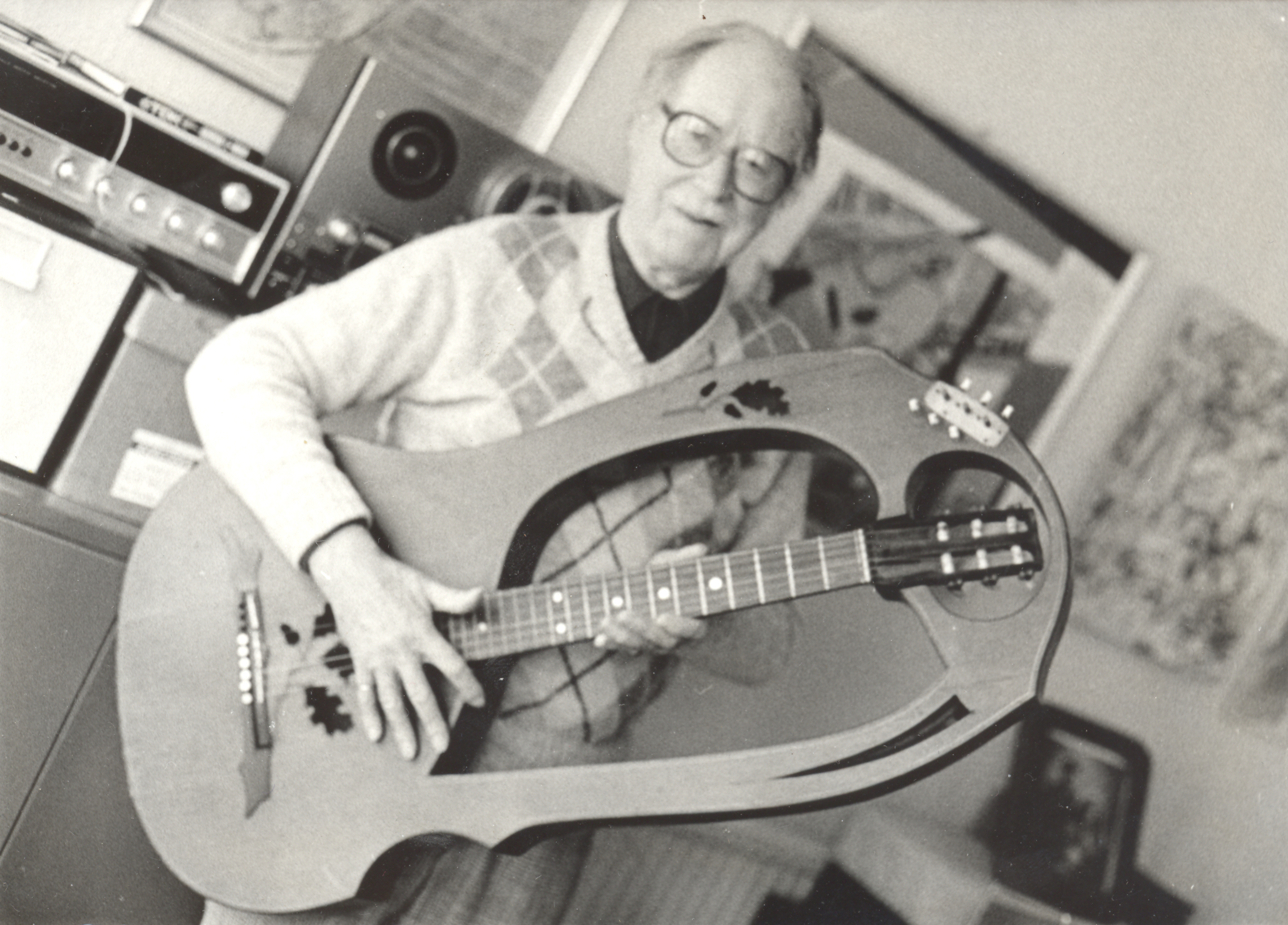












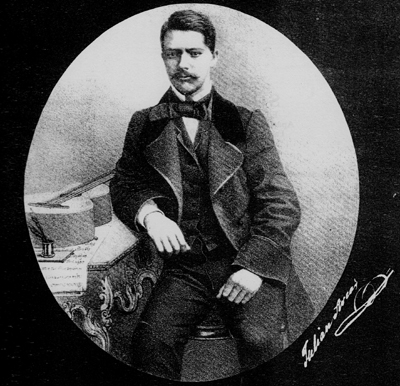
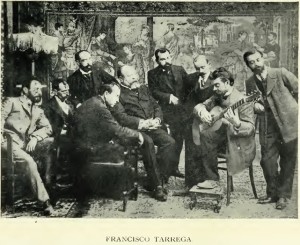
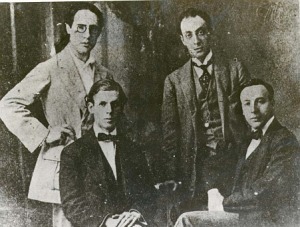
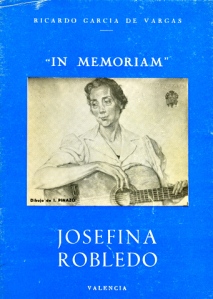
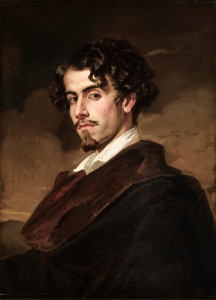
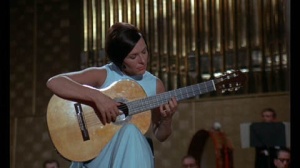
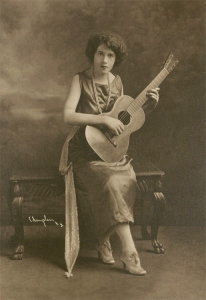
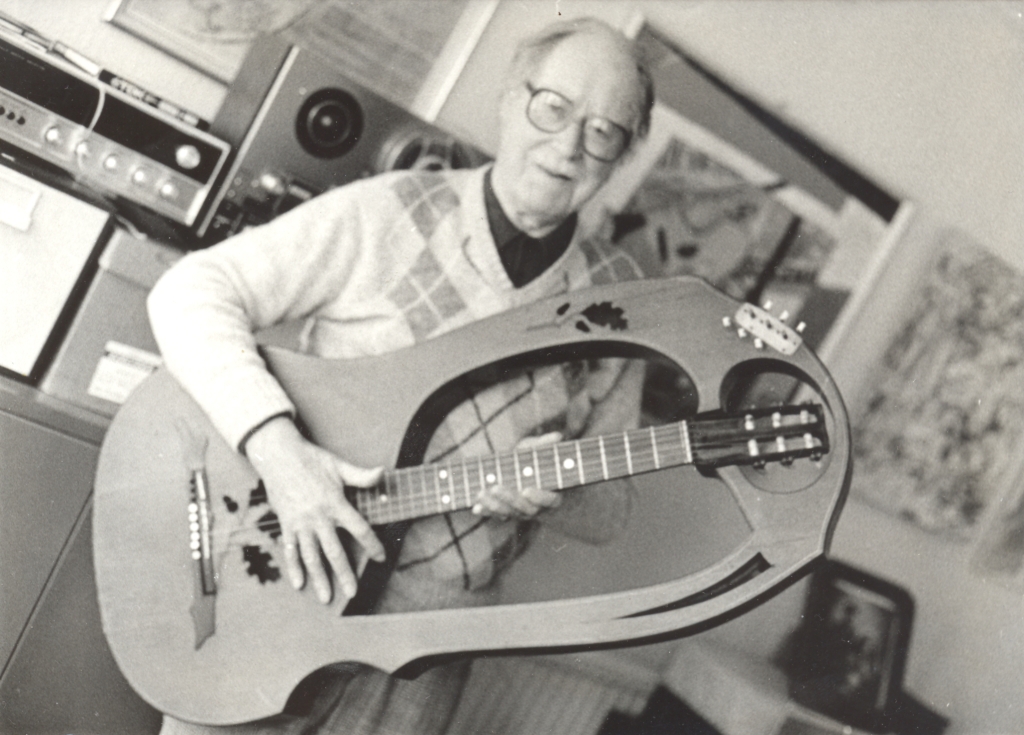
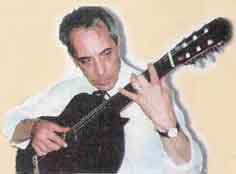
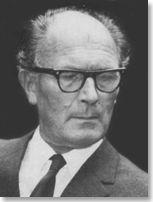
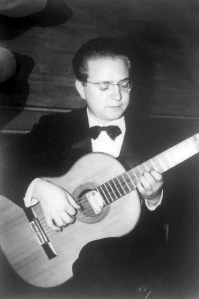
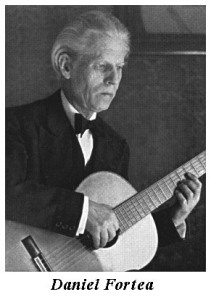
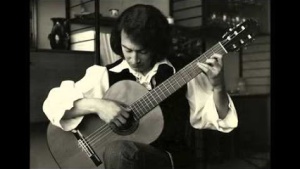
Absolutely love this new site! I’ve had a number of students over the years that had trouble growing nails and I could never give them the proper technical support they needed to get them to play with good tone. This site I hope will become a big help for nail-less CG players.
I was particularly fascinating with your section on famous nail-less players and I’m sorry to deliver possible bad news but I don’t think Sharon Isbin or Roland Dyens currently play without nails, and I offer up these videos as proof if you look very closely at the Right Hand(s) of each.
Best of luck on your new site,
Ray
LikeLike
Thanks, Ray. Great to get feedback. Too bad about Dyens. I also now know that Sharon Isbin does use nails, so she has been removed also.
LikeLike
Wow, the warmth of Josefina Robledo’s playing comes through even on a “poor” recording. I love your site here; by choice, I’m a no-nails player too, although by no means a virtuoso 🙂 ..just a “learner”. Thanks for putting all this up, it’s a great resource.
LikeLike
Cheers, Doug. Josefina was a wonderful player. Glad you are getting something from the site.
LikeLike
Duck Baker play jazz and irish music without fingernails on a flamenco guitar. Plenty examples on YouTube. Nice site, contrast.
LikeLike
Thanks, Carl. Appreciated.
LikeLike
Another really good play without nails is Anne Marie Hagen.. check her out on Utube.
LikeLike
Good call, Henry. Will do.
LikeLike
Hi Rob,
Great project!
I’m fairly confident the Lute player Olav Chris Henriksen plays guitar without nails. I haven’t found concrete evidence on video, but it may worth investigating. Mr. Henriksen’s “Guitar of the North” album is worth a listen too.
Cheers,
Ben
LikeLike
Thanks, Ben. I looked him up, and he doesn’t seem to play the Torres/post-Torres-style classical guitar. So I can’t include him. If I’m wrong, please let me know.
LikeLike
Hi Rob,
as I have seen you have already the names that I gave you. But there occurres a small mistake. Schwarz-Reiflingen mentions Fortea NOT Cubedo. Something else there sometimes is repeated the “fact” that Cubedo won the genf Competition against Williams. This is not true, Williams simply did not appear.
I will send you some photos of Sch.R.
If you also think of players of other styles we should mention Joe Pass ( CD Songs for Ellen completely on a nylon string guitar, if I remeber right. Also he recorded some duos with Ella Fitzgerald.) And there are nylon string recordings by Pat Matheny and John Scofield (Quiet) Of course Eric Clapton did some nylon stuff and so on…
Best wishes
Andreas
LikeLike
Thanks again, Andreas. I will make the changes later today.
LikeLike
Hi Rob,
Thank you so much for taking the time to put together this website; it’s a wonderful resource for those of us trying to learn to play the guitar with no nails.
I was listening some videos of Juan Mercadal’s playing, and was astounded at the beautiful sound and range of tone colours he was to coax out of his guitar! Who needs nails, anyway? 🙂
A couple of questions for you: I’m planning on ordering a baroque lute next year, and was wondering if playing the guitar flesh only will be good preparation for playing the lute? Also, can gut strings be used on a full size guitar, so long as you tune it down to around A=430hz or so?
Cheers,
Wilson
LikeLiked by 1 person
Hi Wilson, and thanks for your supportive comments. Juan Mercadal was a revelation to me to, first time I heard him. He should be better known.
Most baroque lute players play without nails, so, yes, the sooner you get used to playing without them, the better.
And, yes, I sometimes use gut trebles at a lower pitch, and love doing so. Unfortunately, in my teaching I need to be at 440, hence my search for the perfect string for flesh playing at 440. That’s why I have another classical on order, a Torres-style guitar from Kevin Aram, which will be strung in gut at a lower pitch. That’s due in the Spring of 2016.
See my Strings page for my gut-string recommendation.
Cheers,
Rob
LikeLike
Hey Rob,
The list is of nail-less players is great and your videos have greatly encouraged me to play classical guitar, since my nails for an unexplained reason refuse to grow long enough for traditional playing.
Cheers, Justin
LikeLike
Cheers, Justin. Glad to have been of help. Best wishes for your studies!
LikeLike
Very good choices!
LikeLike
Hello Rob,
I have found another french classical guitarist who plays without nails. He made some few CDs that we can hear samples on Amazon i think. See his website below (sorry it’s written in french) :
Click to access Article%207.pdf
Cheers,
Matt
LikeLike
Many thanks, Matt. He looks very interesting. Much appreciated!
Rob
LikeLike
Matt, I have added him to my list of interesting players. But the email address on his Contact page bounces back as “permanent error”. I hope he is still alive.
LikeLike
Hello Rob,
I hope he is still alive so. I can maybe inquire Delcamp’s French forum if someone knows him. I’ll let you know.
You have well translated his page !!
Cheers,
Matt
LikeLike
Cheers, Matt. Let me know what you find.
LikeLike
The clip from Anibal Arias is fantastic, nothing lacking in terms of tonal color or volume.
LikeLiked by 1 person
Exactly, and soul too. Beautiful player!
LikeLiked by 1 person
Hello Rob.
Hope you are well. I just find out that a concert is organized on November 28th this year in Carpentras (south of France) in memory of Patrick de Belleville who unfortunately died last year. Here is the link of this concert : http://www.guitareclassiquedelcamp.com/viewtopic.php?f=50&t=38202
Cheers Matt
LikeLiked by 1 person
Hi Matt. Thanks for the information, though it’s sad to read. Wish I could be there, but it’s not possible.
LikeLike
Hello Rob – So thrilled to have come across your site. I’ve just recently begun to try and learn to play the classical guitar which I have loved all of my life. I’m encountering several physical obstacles to playing namely very short fingers and odd shaped thumb plus the inability to grow fingernails. So relieved to literally hear I can cross my lack of finger nails of my “to be solved” list! Many thanks! Susan
LikeLike
Great to hear from on you Susan, and that my website has helped you. Very pleased. As for short fingers, you do get classical guitars with a shorter string length. The usual string length (between bridge and nut) is 65cms, but if you search online you’ll find some with string lengths of 64 or even less. I can’t help you with your odd-shaped thumb! 😉 Good luck!
LikeLike
Hello Rob,
Thank You for your site. I’ve just recently begun to try and learn to play without nails and I have found a lot of inspiration on your site.
What about Cacho Tirao? I have not been able to see any nails on his right hand fingers.
Cheers
Anders Fransson
LikeLike
Thanks for your comments, Anders. I’m very pleased this website has been an inspiration for you.
I am embarrassed to admit I had to look up Cacho Tirao. He had an eventful life! I would need to know for sure if he played without nails, before I include him here. Thanks for mentioning him to me!
Rob
LikeLike
Hello Rob. I have been following you in YouTube for a while and I must say that your warm tone and technique is superb.
Here is a question. What about Yepes? I know he was not exactly a no-nails finger, but in one of his interviews he mentioned that the touch has to be with nail and flesh at the same time, no one before the other. I have been posihing my nails to get it and I am close to playing without nails. He stated that the nail is the support of the finger and so it must be short to suppor the finger and to touch the string at the same time that the flesh to avoid those awful noises of the nails.
What do you think?
LikeLike
Hi Daniel. Yepes’ first teacher was Estanislao Marco, a no-nails player (I’ve recorded a few videos of his charming music). Marco seems to have instilled in Yepes a respect for flesh playing. But he also had other teachers who were nail players. I guess he tried to reconcile the two. He was not the first to do so. Aguado combined flesh and nail, though Sor criticised him for it. You have to find your own home on the continuum between all nail and all flesh. Most people congregate around the middle, as you describe. But I’m happy with no nail contact at all. Some people grow their nails a little, not long enough to touch the string, but long enough to provide some support. It’s all good. The main thing is to play music and enjoy life, while supporting each other. Whatever technique helps you do that, is a good technique. Keep digging.
LikeLike
Thanks for the input
LikeLike
Hi Rob,
I was playing some classical guitar music in my language arts classroom while the children were writing. I was playing Lagrima recorded by you and I then noticed that you do not use fingernails. I also play classical guitar, but I am unable to grow fingernails. I had no idea there were some many gifted players that played without nails, and even chose to play without nails. I had been discouraged up to this point with a lack of nails, especially since every method book on classical guitar has pages on “nail care”. But you’ve given me a new perspective, and the encouragement to continue my studies. Thank you.
Chris
LikeLike
Chris, great post. I don’t know whether I’m happier about the post or that you played my recording to a class of children! Many thanks. You’ve made my day.
Rob
LikeLike
Hi Rob,
Great list.
But how come Fernando Sor is not on this list? I’ve always thought he played without nails, didn’t he?
LikeLike
Absolutely, Francisco, he was very much a champion of no-nails playing. But this Players page is devoted to players of what we might call the modern classical guitar, from Torres to the present. If I included all late 18th and 19th-century guitars, the list would be VERY long indeed. I appreciate your comment though, and Sor does get a mention on the Quotations page, and a lot more on the 19th-Century page.
Best wishes,
Rob
LikeLike
Hi Rob
Your site is a wonderful resource and your playing, an inspiration – thank you. I’m a flesh player too (for a number of reasons). As well as preferring the tone from my fingertips, I feel a far more intimate connection to the instrument. It’s also good to be able to give my students a choice, as so many are reluctant to grow (and maintain) nails – hand cream is a lot less hassle than emery paper and files etc!
Best wishes
Jim Kelleher
LikeLike
Cheers, Jim. Good to hear from you. I’m trying to resist saying you “nailed” it, but you have pinpointed the two most important factors for me in playing without nails: tone and the intimate connection with the instrument. It also sounds like you are a sensitive and caring teacher. Your students are lucky to have you! Thanks for your comment. Rob.
LikeLike
Hello Rob,
I think Thorsten Bleich is a no-nails player guitarist (see youtube Mauro Giuliani “la follia” op. 45).
Thank you.
LikeLike
Thanks, Roberto. I’ll check him out.
LikeLike
[…] (1852-1909), though Tárrega was a convert to flesh in his later years). I recommend visiting Rob MacKillop’s site for comprehensive list of players old and new. MacKillop is undoubtedly the best advocate for flesh […]
LikeLiked by 1 person
Cheers, Steven.
LikeLike
Rob, there’s one missing from tour list. Carles Trepat.
Search him on You Tube
LikeLike
Unfortunately, Carles plays with nails. Otherwise he would be perfect 😉
LikeLike
about Paulinho Nogueira, available on You Tube. Bachianinhas, nº 1 and nº 2.
LikeLike
Paulinho Nogueira is already on the page. Please read the page before adding comments, and please don’t add videos. I can do that myself.
Plus, Carles Trepat definitely uses nails, as I told you. He is a FaceBook Friend of mine.
LikeLike
Good morning Rob, and merry Christmas. I had not seen in your page a brasilian player named Nonato Luiz. I am not totally sure, but it seems to me that he plays without nails, what do you think?
On another note, I have definitively passed to play without nails, it has taken me some time but the warm tone of it is matchless.
LikeLike
Hi Daniel. Happy Christmas to you too. I can’t fit ALL the flesh players on my site, just a representative few. There are many Brazilian flesh players – seems to be quite common there. Glad to see that you have turned 😉 Good luck with your progress.
LikeLike
I think that, in my humble opinion, Cacho Tirao played without nails also. He is one of my favorite guitarists ever. Could somebody confirm?
LikeLike
Hi Zoran, I think you might be right..but I cannot list EVERY player who plays without nails, as there are so many of them. He is good, though.
LikeLike
Hi Rob, i want to thank you for this awesome blog, i love your guitar touch. I also play without nails, studied with Juarez Carvalho here in Rio de janeiro who also play without nails. I want to let another guitar player who was Juarez former student (and play without nails) and now is a professional guitarist on USA. Thank you!
Marco de Carvalho playing Brimbau by Baden Powell
LikeLike
Thank you very much! Nice to hear from you, and about your teacher. And thanks for the link, which I’m sure we’ll all enjoy. There are MANY more no-nail players than I have listed, of course, and there always have been.
Cheers,
Rob
LikeLike
Found you just in time! I was about to set up an appointment at a nail salon for acrylics, but playing this morning decided I liked the sound of flesh. My nails are thin, and I have tried for years to grow them – with itermittent success). They break in the winter and I’m a swimmer and feel the chlorine damages them. I also play steel string. I felt that I would lack legitimacy without nails even though at 73 I doubt a career is imminent. I was playing a Sor piece this morning, and knew he played without nails, but had no idea so many others did as well. Thank you so much.
LikeLike
Cheers, David. You’ve made my day. There’s absolutely no rule saying you have to use nails, and Sor hated them. Just enjoy your time with the guitar!
LikeLike
May I suggest??
LikeLike
Mario, the first link does not work for me – it says “unavailable”. The second is truly beautiful. I love your playing.
Rob
LikeLike
Hi Rob! A guitarist who plays without nails is José Miguel Moreno (although he comes from the world of early music). I discovered the site recently, the inspiration was such that and I have removed my nails, but I have a problem with my index finger, the nail is filed to the limit but 80% of the attacks interfere with a rub, this does not occurs with middle and annular (where the nail is further in), I wanted to know if this is common at first. As for strings I have played for decades with carbon savarez, should I switch to nylon to be closer to the gut? I read the strings section, I used the nylon Savarez once and it felt very rough for the left hand, for That sounds strange to me that it is suitable for playing without nails (Aquilla here only strings for ukelele). I am tuning at 415, it can be lowered even more (my guitar is type Ramirez III, 664). Thanks a lot!
LikeLike
Dario, I can’t comment on your own finger issues, you’ll have to find a way that works for you. As for Moreno, yes there are many lute and historical-guitar players play without nails, but this Players page is for those who play modern classical guitars mostly, modern being post Torres. Strings, there is nothing like gut. If you try gut, you will either love it ot loathe it, but it is unique, and what everyone used before nylon was invented, and which is now helping to kill our planet.
LikeLike
Hey Rob, Brandon Acker is giving no nails a try. He just posted his experience on youtube- he has a channel. He’s a great guitarist. Definitely worth a look. I also play no nails, however I’m not particularly good yet. Your site has boosted my confidence in carrying on. Thanks and cheers
LikeLike
Yes, I’m aware, thanks. Good luck with your studies, Paul!
LikeLike
Nebojsa Vasovic
February 12, 2021.
Dear Rob, an excellent guitarist is missing from your “no nail” list: Вячеслав ШИРОКОВ from Russia. He didn’t record much and at one point stopped playing classical music but he has a site with his recordings under his name. Not only that he played nicely his own composition but Brazilian composers (such as Dilermando Reis) as well. His interpretation of Capricho Arabe is one of the best I’ve heard. Links:
https://www.youtube.com/channel/UCTZjjFjw31f4pxZvf_rOEMQ
Here, you can see clearly he has no nails:
LikeLike
Thank you, Nebojsa!! Wonderful playing, and it is great to have someone from Russia. I’ll get around to having him included very soon.
Rob
LikeLike
There. I’ve included him. Thanks again!
LikeLike
Rob, this one is beautiful, please listen to it: https://www.youtube.com/watch?v=RoWOBJOTh_Q
LikeLike
Hello Rob ,
excuse my poor english, i do my best,
Thank’s a lot for this great website and your youtube chanel. You gave me the pleasure to explore a whole new world of music and emotion. Your playing fantastic and i can feel a life of music in it, that’s beautiful.
I have been playing guitar for 15 years but never really dig in “classical music”. For some reasons i always been attracted by it, but i thought it was something for elite people or too difficult too learn for me, kind of bla blaa.
Now i am older and i feel more free than ever to learn, try , make mistakes and have fun while expressing emotion. that’s what’s it’s all about no ?
Playing an instrument is really the best thing to feel alive and make connection to the world around us at so many level in my opinion. I am also a flesh player because i work all day with my hands, they are my tools. I never fellt limited by playing without nails as an amateur. To my ears flesh player have a more “sweet-wooden-warm” sound if it makes any sens… Again, thank you , i have now found a new source of music and an inspiration.
Peace,
Guillaume
LikeLike
Thanks for that, Guillaume. I didn’t start classical guitar until I was 28. Before that I played Blues and even Punk! I started classical with Frederick Noad’s book, Solo Guitar Playing Volume 1, which I still use with my students. It’s great for learning to read musical notation with, and introduces you to some great repertoire pieces which I still play today. Anyway, Best Wishes for your future as a musician! Rob
LikeLike
Hi Rob,
I was just reading and old thread on delcamp and you mentioned Milan Grakalic, who you list on this page. I did a search and came up with this on Youtube:
Maybe you are already aware of it. Possibly posted by his wife?
Ray
LikeLike
Thanks, Ray! I’ll add it to his entry in my Players page. Appreciated.
LikeLike
Hello Mr Mackillop, I’m a jazz / folk / blues guitarist. I use a Cordoba GK Pro Negra. I play with no nails. Just an FYI / perhaps your aware but there’s a young classical guitarist named Steven Watson whose been playing with no nails. He seems to know what he’s talking about. At least he got my attention and I’m 67.
LikeLike
Hi Joe. Nice to hear from you. I don’t name here EVERY no-nail player, as there wouldn’t be enough room. Steven started with nails, went to no-nails, then back to nails, and now he’s no-nails again. I thought I’d let him settle one way or the other. It seems as though he might have settled for no-nail playing, and I am considering adding him here as I am a fan of his playing, and a subscriber to his YT channel. He is also a fine composer. We are in touch, and he has dedicated one of his compositions to me. I haven’t updated this page in a while, but when I get around to it I’ll add Steven’s name.
LikeLike
Very interesting read. I am a guitar history aficionado. I went through all of them and even looked in the internet for additional information. I am sure I will come back to this list again, and look for some more facts related to these players.
Thank you so much.
Victor
LikeLike
Nice to hear from you, Victor. I’m happy this has given you something to engage with. Rob
LikeLike